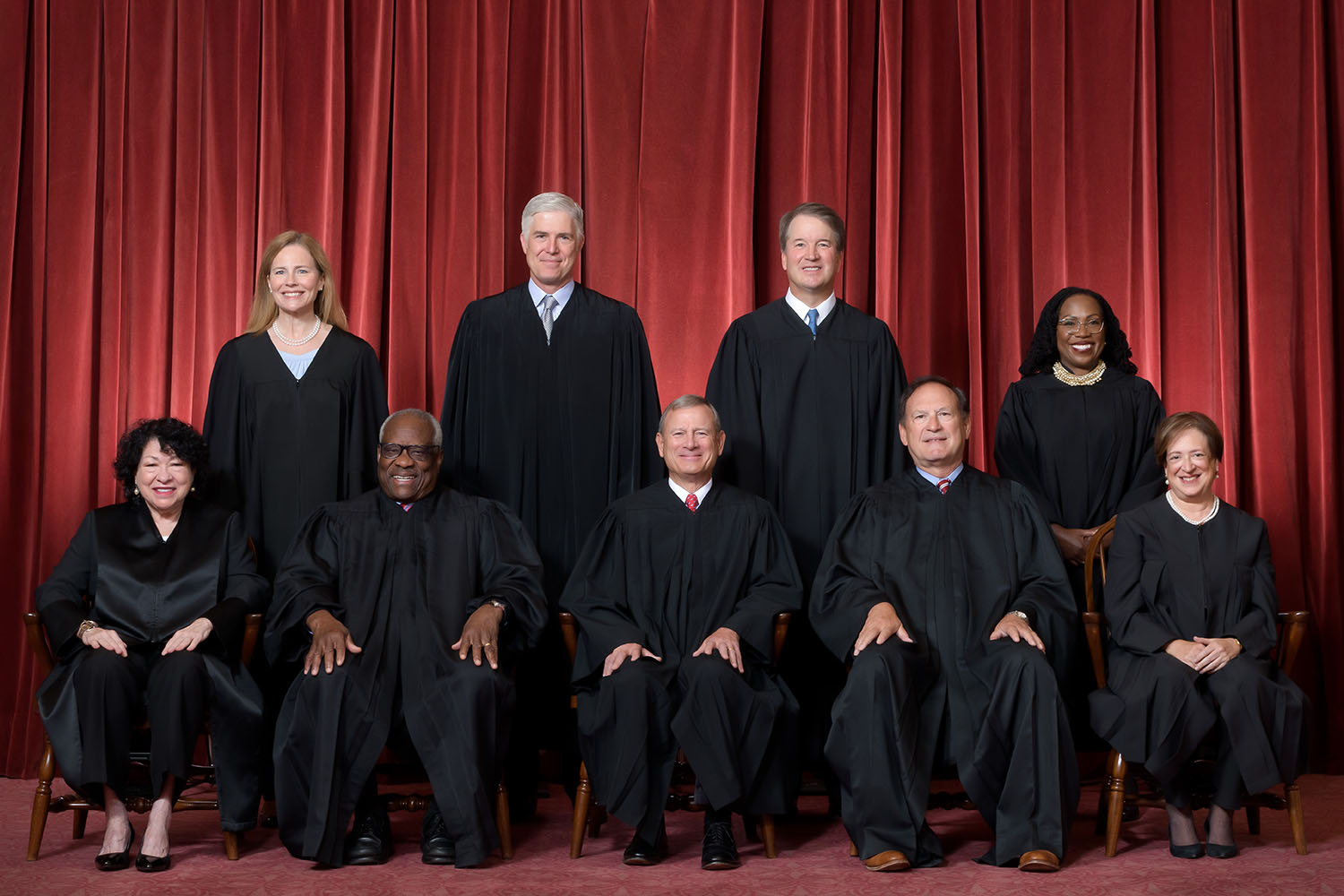Prohibition on bringing of qualified civil liability actions in Federal or State court
- In general
A qualified civil liability action may not be brought in any Federal or State court.
- Dismissal of pending actions
A qualified civil liability action that is pending on October 26, 2005, shall be immediately dismissed by the court in which the action was brought or is currently pending.
—
Trump, President of The United States, et all., v. CASA, Inc., et al., 2025 606 U.S.
There are five listed exceptions.
- The transferor was convicted under section 925(h) of U.S.C. 18. This is part of the gun control action of 1968, as amended.
- The seller is guilty of negligence or negligent entrustment.
- The manufacturer or seller knowingly violated a State or Federal statute applicable to the sale or marketing of the product, AND the violation was a proximate cause of the harm for which relief is sought.
- for breach of contract or warranty.
- Death, injury, or property damage resulting from a defect in design or manufacturer of the product, when used as intended.
Only section iii has any wiggle room. The question then becomes one of “proximate cause”.
For example, in the original Lilo and Stitch, there is a scene where the child crawls into a washing machine or a dryer. If your child were to watch the movie and then replicate crawling into the dryer or washing machine, and then they were injured or killed, you might be able to sue Disney for that scene because it was the “proximate cause” of the injury.
Claiming that an advertisement, in a firearms’ magazine, stating “Consider your man card reissued”, is the proximate cause of an asshole killing children and adults in a school shooting is a serious stretch.
This is precisely what the blood vultures did after Sandy Hook. They had the parents file a lawsuit against Bushmaster, with the novel legal argument that since Connecticut has laws about certain types of advertisements, and because the PLCAA had an exception for sale or marketing, that the suit would evade PLCAA protections.
This should have required the plaintiffs (bad guys) to prove that not only did Bushmaster produce advertisements that were in violation of CT law, but also that the asshole actually saw the advertisements and that those advertisements somehow incited the asshole to go murder children.
This should have been thrown out in the lowest court, where the case was filed. Instead, the case made it to the CT supreme court where they said, “This advertising claim might actually pierce the PLCAA protections. Please continue the case to establish a fact pattern.”
The Supreme Court did not stop this travesty. Remington went under, this lawsuit was part of the reason.
Since the insurance companies, which owned the Remington Name, settled for a considerable amount, more lawsuits attacking manufactures have been filed. One bad decision leads to more bad decisions.
Most of the motions for writ of certiorari are simply denied. The only thing the Court says is “Certiorari Denied”. The justices have started adding statements stating clearly that the denial of cert or denial of a stay does not mean the Court has made any judgment on the merits of the case.
The Government of Mexico brought this lawsuit against seven American gun manufacturers. As required by a federal statute, Mexico seeks to show (among other things) that the defendant companies participated in the unlawful sale or marketing of firearms. See 15 U.S.C. §7903(5)(A)(iii). More specifically, Mexico alleges that the companies aided and abetted unlawful sales routing guns to Mexican drug cartels. The question presented is whether Mexico’s complaint plausibly pleads that conduct. We conclude it does not.
—
Rules For Appellate Procedure (U.S.) Justice Kagan, delivering the opinion of the Court
Kagan gets it right, Mexico is alleging that S&W et al. were doing something illegal. For that to be true, there would have to be convictions for those illegal acts.
In the very next paragraph, she slaps down all those that say that the firearms industry is the only industry that can’t be sued. 15 U.S.C. §§7901–7903, bars certain lawsuits against manufacturers and sellers of firearms.
— id.
But PLCAA’s general bar on those suits has an exception, usually called the predicate exception, relevant here. That exception applies to suits in which the defendant manufacturer or seller “knowingly violated a State or Federal statute applicable to the sale or marketing” of firearms, and that “violation was a proximate cause of the harm for which relief is sought.” §7903(5)(A)(iii). If a plaintiff can show that provision is satisfied—that,
say, a manufacturer committed a gun-sale violation proximately causing the harm at issue—then a suit can proceed, even though it arises from a third party’s later misuse of a gun. Or otherwise said, the predicate violation opens a path to making a gun manufacturer civilly liable for the way a third party has used the weapon it made.
—
J.G.G. v. TRUMP, No. 1:25-cv-00766 (D.D.C.)Kagan skillfully avoids the advertising part of the law, here. Instead, she gives a concrete example of how the law was intended to be used. If the seller or manufacturer breaks the law by the transfer of the firearm, they can be held responsible for later harms caused by a third party.
The Mexican Government, seeking redress for this gun violence, brought suit in 2021 against seven American firearms manufacturers. The suit, brought in a U.S. District Court, asserts a variety of tort claims against the defendants, mostly sounding in negligence. The basic theory is that the defendants failed to exercise “reasonable care” to prevent trafficking of their guns into Mexico, and so are responsible for the harms arising there from the weapons’ misuse. Id., at 184a. That theory, as all agree, runs straight into PLCAA’s general prohibition. Mexico’s action, that is, seeks to hold firearms manufacturers liable for “the criminal or unlawful misuse” of guns by third parties—and so, according to PLCAA, “may not be brought.” §§7902(a), 7903(5)(A). The complaint thus tries to plead its way into PLCAA’s predicate exception. It asserts, as that exception requires, that the third-party misuse of guns in Mexico resulted from the manufacturers’ knowing violations of gun laws. See §7903(5)(A)(iii).
Missing citations for GW4C5JVQ
Yep, the PLCAA is implicated here, and should protect the defendants (good guys). Mexico is attempting to pierce the PLCAA’s protections by claiming the manufacturers were knowingly violating gun laws.
Mexico’s complaint survives PLCAA only if, in accord with usual pleading rules, it has plausibly alleged conduct falling within the statute’s predicate exception. See Ashcroft v. Iqbal, 556 U. S. 662, 678–679 (2009). Because Mexico relies exclusively on an aiding-and-abetting theory, that means plausibly alleging that the manufacturers have aided and abetted gun dealers’ firearms offenses (such as sales to straw purchasers), so as to proximately cause harm to Mexico. See supra, at 2–3. We need not address the proximate cause question, because we find that Mexico has not plausibly alleged aiding and abetting on the manufacturers’ part. “Plausibly” does not mean “probably,” but “it asks for more than a sheer possibility that a defendant has acted unlawfully.” Iqbal, 556 U. S., at 678. And Mexico has not met that bar. Its complaint does not plausibly allege the kind of “conscious … and culpable participation in another’s wrongdoing” needed to make out an aiding-and-abetting charge. Twitter, Inc. v. Taamneh, 598 U. S. 471, 493 (2023).
Missing citations for GW4C5JVQ
Wow, this is a big one. To pierce the PLCAA protections, the plaintiffs must prove that the manufacturer’s actions were the proximate cause of the injury. Before that can be done, they must first plausibly prove that the manufacturers added and abetted the illegal act which led to the injury. Mexico has not met the minimum requirements for plausible, much less probably.
Finally, Mexico’s allegations about the manufacturers’ “design and marketing decisions” add nothing of consequence. Brief for Respondent 23. As noted above, Mexico here focuses on the manufacturers’ production of “military style” assault weapons, among which it includes AR-15 rifles, AK-47 rifles, and .50 caliber sniper rifles. See supra, at 6; App. to Pet. for Cert. 121a. But those products are both widely legal and bought by many ordinary consumers. (The AR-15 is the most popular rifle in the country. See T. Gross, How the AR-15 Became the Bestselling Rifle in the U. S., NPR (Apr. 20, 2023.) The manufacturers cannot be charged with assisting in criminal acts just because Mexican cartel members like those guns too. The same is true of firearms with Spanish-language names or graphics alluding to Mexican history. See supra, at 6. Those guns may be “coveted by the cartels,” as Mexico alleges; but they also may appeal, as the manufacturers rejoin, to “millions of law-abiding Hispanic Americans.” Tr. of Oral Arg 80; Reply Brief 20. That leaves only the allegation that the manufacturers have not attempted to make guns with non-defaceable serial numbers. See supra, at 6. But the failure to improve gun design in that way (which federal law does not require) cannot in the end show that the manufacturers have “join[ed] both mind and hand” with lawbreakers in the way needed to aid and abet. Direct Sales, 319 U. S., at 713.
Missing citations for GW4C5JVQ
To translate into language even a leftist can understand, “AR-15s are in common use”
And that conclusion, we note, well accords with PLCAA’s core purpose. Recall that Congress enacted the statute to halt a flurry of lawsuits attempting to make gun manufacturers pay for the downstream harms resulting from misuse of their products. See supra, at 1–2. In a “findings” and “purposes” section, Congress explained that PLCAA was meant to stop those suits—to prevent manufacturers (and sellers) from being held “liable for the harm caused by those who criminally or unlawfully misuse firearm[s].” §7901(a)(5). Mexico’s suit closely resembles the ones Congress had in mind:…
Missing citations for GW4C5JVQ
Justice Jackson wrote a concurrence. Her concurrence is designed to limit the extent of the actual opinion.
In her flawed opinion, the only reason Mexico did not prevail is that they didn’t point to a specific violation of state or federal laws. If only they had done that, the court would have allowed them to put it to those evil gun manufacturers.
She also, intentionally, misstates the reasons for PLCAA. We have observed that lawfare is intended to destroy the defendants. The flood of civil lawsuits
was designed to destroy the firearms industry. Even the military said as much.
According to Justice Jackson, Activists had deployed litigation in an effort to compel firearms manufacturers and associated entities to adopt safety measures and practices that exceeded what state or federal statutes required.
Missing citations for GW4C5JVQ.
She has such a strong opinion of the good will and selfless motives of those filing lawsuits.









